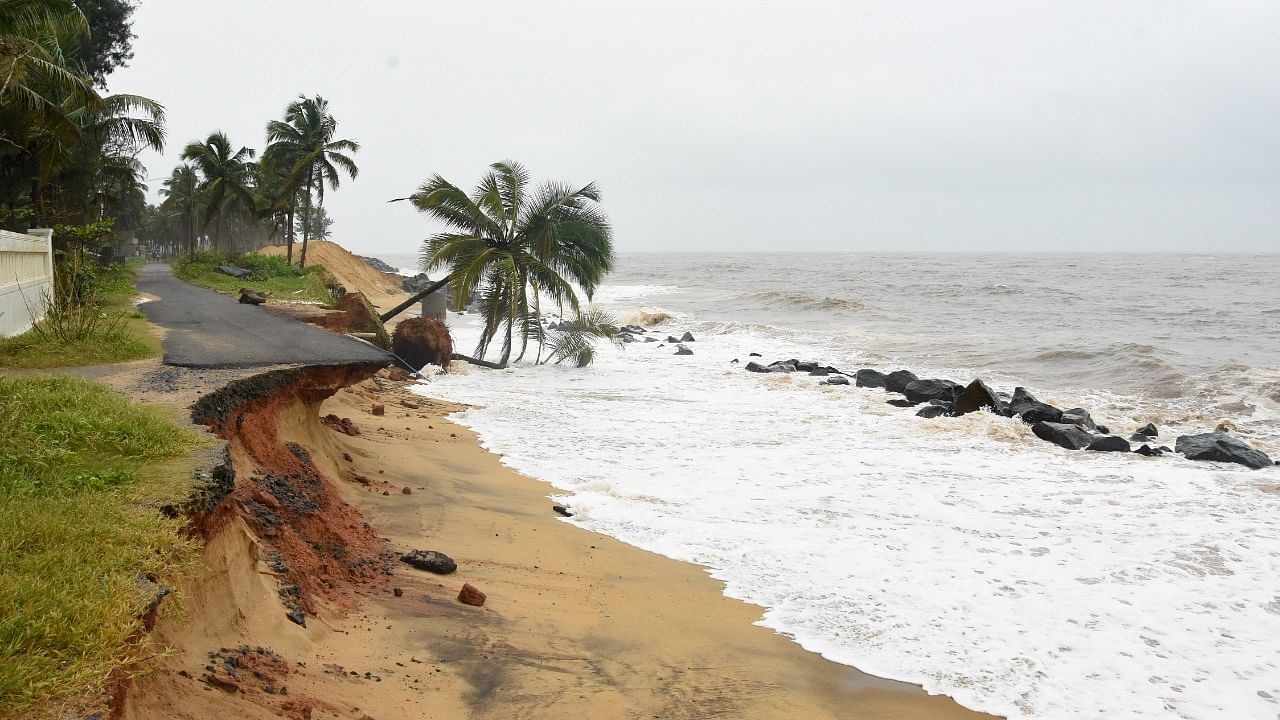
There is a serious threat to India’s coastline across all the states with seashore. The government told parliament recently that 34% of the coastline is facing erosion of various degrees. While there are signs of accretion in some areas, only 40% of the coastal area is considered to be stable. West Bengal saw erosion along 60% of its coastline from 1990 to 2018 and is the worst-affected state. Pondicherry saw erosion along 56% of its coastline, though it only has a small seafront. This is followed by Kerala, which has suffered extensive erosion along 46% of its coast. Tamil Nadu has also been hit badly. The figures show that over 23% of Karnataka’s coastline has been affected by erosion. Recent research on erosion in the state showed that Ullal has been worst-hit and it has lost land at the rate of 1.3 metres a year since 1990.
The erosion crisis is expected to worsen in the coming years. A 2016 study by IIT-Mumbai and the National Centre for Earth Science Studies had found that coastal erosion will occur 1.5 times faster in the next three decades than in the last 30 years. There are a number of studies that predict that several localities in India’s coastal cities will be submerged by 2050. The threat is not only to cities. Coastal areas are heavily populated and support many economic activities, like fishing, that provide livelihood and income. Erosion will hit them badly. With the receding of the coastline, large numbers of people have already been dislocated and have lost their shelter and livelihood. The degradation of the coast is caused by both natural phenomena and human activities. The increasing incidence of cyclones and other natural calamities as a result of climate change is one reason. Construction of infrastructure, sand-mining and destruction of mangroves are other reasons.
Coastal regulatory rules and regulations have left much to be desired, and they have been diluted also. Even the diluted rules are not implemented properly. A lot of financial allocations are made every year to protect the coastline and to rehabilitate those affected by erosion. But there are many questions about the methods used to prevent erosion. Walls and bunds are usually built to resist the onslaught of the waves. But there is a view that in many places, they redirect the waves to hit and damage adjacent areas where there are no protective bunds. The Intergovernmental Panel on Climate Change (IPCC) is sceptical about seawalls and has warned against them. There is need for more research and scientific studies to develop better and more effective methods to protect the coastline and to prevent erosion.
Check out latest DH videos here